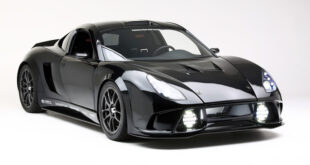Headlights and Tail Lights: Vehicle’s Essential Lights Headlights and tail lights are crucial components of any vehicle, ensuring safety, visibility, and compliance with traffic laws. These essential lighting systems serve both functional and aesthetic purposes, making them indispensable for modern transportation. Whether you’re upgrading, replacing, or simply maintaining these lights, understanding their features, types, and maintenance is key to making informed decisions.
What Are Headlights and Tail Lights?
Headlights are mounted at the front of a vehicle, providing illumination for the road ahead during low-light conditions. Tail lights, on the other hand, are located at the rear and light up when the headlights are on, indicating the vehicle’s presence to other drivers.
Types of Headlights
- Halogen Headlights
- Most common and cost-effective.
- Emit a warm, yellowish light.
- LED Headlights
- Energy-efficient and long-lasting.
- Offer bright, white light for better visibility.
- HID (High-Intensity Discharge) Headlights
- Brighter than halogen and LED.
- Emit a bluish-white light, ideal for long distances.
- Laser Headlights
- Cutting-edge technology with enhanced brightness.
- Expensive but extremely durable.
Types of Tail Lights
- LED Tail Lights
- Popular due to energy efficiency and sleek design.
- Halogen Tail Lights
- Cost-effective but less durable than LED.
- Neon Tail Lights
- Found in luxury vehicles for a unique aesthetic.
Benefits of High-Quality Headlights and Tail Lights
- Improved Visibility: Ensures clear vision in low light or adverse weather.
- Safety Enhancement: Reduces the risk of accidents by making the vehicle noticeable.
- Stylish Appearance: Adds to the aesthetic appeal of the vehicle.
- Energy Efficiency: Modern lights like LED consume less power.
Common Issues with Headlights and Tail Lights
- Burned-Out Bulbs: Regularly inspect and replace as needed.
- Dim Lights: Caused by aging or poor-quality bulbs.
- Fogging or Yellowing: Results from UV exposure; cleaning or replacement may be necessary.
- Electrical Problems: Inspect wiring and fuses if lights fail.
How to Maintain Your Headlights and Tail Lights
- Regular Cleaning: Use a soft cloth and mild detergent to remove dirt.
- Check Alignment: Misaligned headlights can reduce visibility.
- Replace When Necessary: Change bulbs at the first sign of dimming.
- Protect from UV Rays: Apply a UV sealant to prevent yellowing.
- Inspect Wiring: Ensure there are no loose connections or corrosion.
Upgrading Your Lights: What to Consider
- Compatibility: Ensure the lights fit your vehicle’s make and model.
- Budget: Set a reasonable budget for quality options.
- Purpose: Choose lights based on your driving needs (e.g., city vs. rural).
- Installation: Professional installation is recommended for complex systems.
10 Tips for Maintaining Headlights and Tail Lights
- Regularly inspect for cracks or damage.
- Clean with automotive glass cleaner to maintain clarity.
- Use protective films to prevent scratches.
- Avoid direct exposure to harsh sunlight.
- Check for moisture buildup inside the lights.
- Test functionality during routine vehicle checkups.
- Replace in pairs to ensure uniform brightness.
- Invest in high-quality bulbs for longer life.
- Keep a spare bulb in your vehicle for emergencies.
- Seek professional help for complex repairs.
10 Frequently Asked Questions (FAQs)
1. How long do LED headlights last?
LED headlights can last up to 50,000 hours, depending on usage.
2. Are HID headlights better than LED?
HID headlights are brighter but consume more energy and take longer to warm up.
3. Can I replace halogen headlights with LED?
Yes, but ensure compatibility with your vehicle’s electrical system.
4. Why do my tail lights keep burning out?
Frequent burnout may be due to poor-quality bulbs or faulty wiring.
5. How much does it cost to replace headlights?
Replacement costs vary but typically range from $50 to $300 per headlight.
6. What causes condensation in tail lights?
Condensation occurs due to cracks or poor sealing, allowing moisture inside.
7. Are aftermarket headlights legal?
Aftermarket headlights are legal if they meet local regulations and standards.
8. How do I prevent foggy headlights?
Apply a UV sealant and clean regularly with appropriate products.
9. Can I repair a cracked headlight lens?
Minor cracks can be sealed, but extensive damage requires replacement.
10. What are adaptive headlights?
Adaptive headlights adjust their direction and intensity based on driving conditions.
Conclusion
Headlights and tail lights are vital for ensuring road safety and enhancing the overall driving experience. From choosing the right type to maintaining their functionality, understanding these components can save you time and money while keeping you safe.
Investing in high-quality headlights and tail lights is not only a matter of aesthetics but also a critical safety measure. By following the tips and advice provided in this guide, you can ensure that your vehicle remains visible, compliant, and efficient on the road.
 oto car insurance used car repair
oto car insurance used car repair
